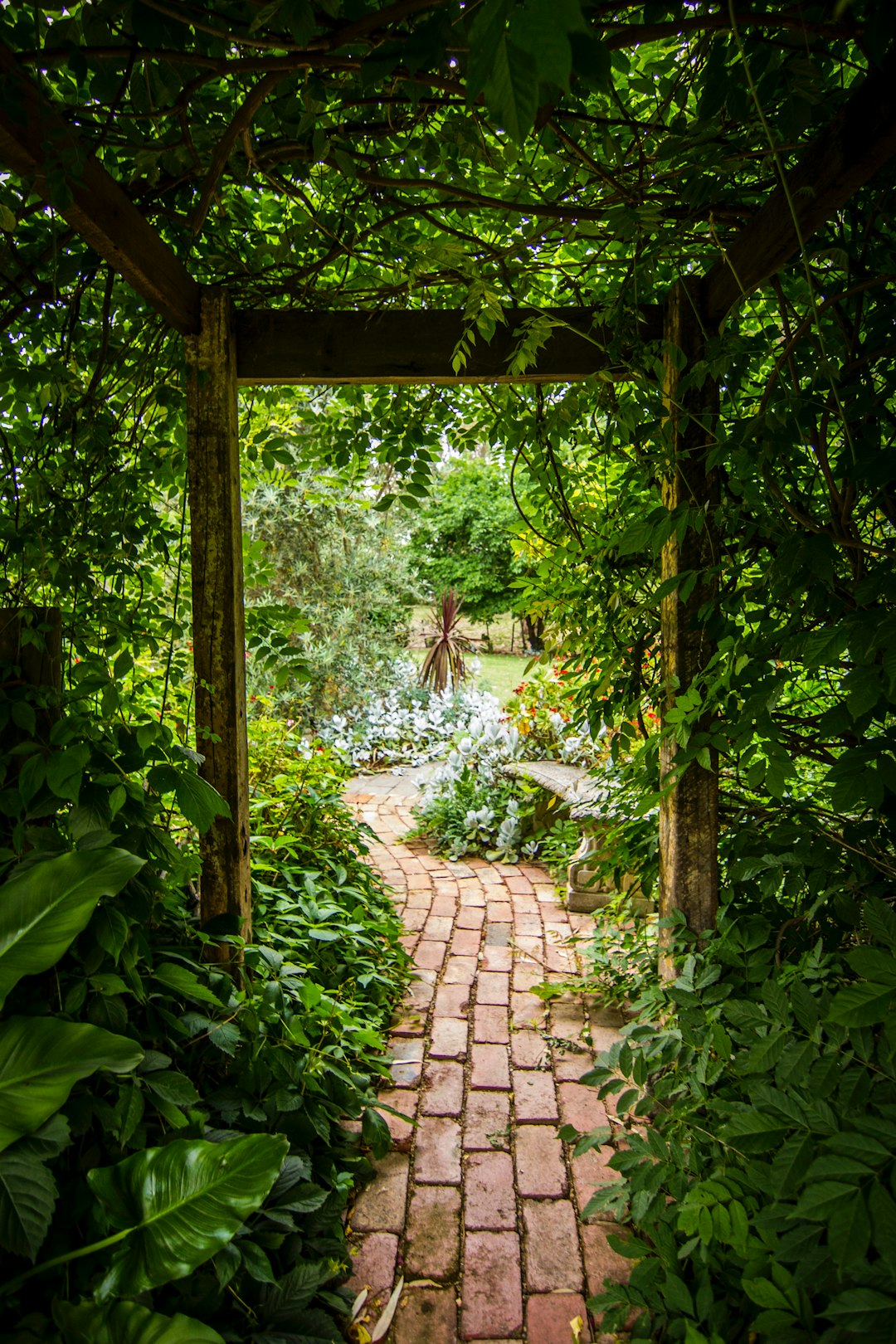Support our educational content for free when you purchase through links on our site. Learn more
Do you dream of having a lush green oasis in your home, even with limited space? Vertical gardens are the perfect solution for bringing nature indoors and maximizing your growing potential in small spaces. But hold on! Before you dive headfirst into creating your own vertical garden, it’s important to understand the potential design flaws that can arise. In this article, we will explore some of the common issues that can occur with vertical gardens and offer useful tips on how to overcome them. Get ready to uncover the hidden challenges of vertical gardening! 💪🌿
Table of Contents
- Quick Answer
- Quick Tips and Facts
- Background: The Rise of Vertical Gardening
- Design Flaw #1: Moisture and Mold
- Design Flaw #2: Bugs and Germs
- Design Flaw #3: Sun Blockers
- Design Flaw #4: Increased Maintenance
- Design Flaw #5: Lack of Support
- FAQ
- Conclusion
- Recommended Links
- Reference Links
Quick Answer
Vertical gardens are an innovative way to bring nature indoors and maximize space. However, they come with their fair share of design flaws. Some common issues include moisture and mold, bugs and germs, sun blockers, increased maintenance, and lack of support for large plants. But don’t worry! With the right precautions and tips, you can overcome these challenges and create a thriving vertical garden. Let’s dive deeper into each design flaw and explore solutions to help you succeed in your gardening journey. 🌱🥇
Quick Tips and Facts
Before we delve into the design flaws, here are some quick tips and interesting facts about vertical gardening:
✅ Quick Tips:
- Choose lightweight and well-draining soil for your vertical garden.
- Consider using a drip irrigation system to ensure proper watering.
- Regularly inspect your vertical garden for pests and diseases.
- Opt for plants that have similar water and light requirements.
- Incorporate a mix of trailing, bushy, and upright plants for a visually appealing display.
💡 Quick Facts:
- Vertical gardens have been around for centuries, with the Hanging Gardens of Babylon being one of the Seven Wonders of the Ancient World.
- Certain plants, like herbs and salad greens, thrive in vertical gardens due to their shallow root systems.
- Vertical gardens can improve air quality and reduce noise pollution.
- They offer a creative and space-saving alternative for urban gardening.
Now that we have our quick tips and facts covered, let’s dig deeper into the design flaws of vertical gardening!
Background: The Rise of Vertical Gardening 🌻📚

Vertical gardening has gained immense popularity in recent years, thanks to its ability to transform urban spaces into green havens. It allows both seasoned gardeners and beginners to explore their creativity and nurture a wide variety of plants, regardless of limited space.
The concept of vertical gardening dates back centuries, with the Hanging Gardens of Babylon often cited as one of the earliest examples. Today, vertical gardens have evolved to include innovative systems like living walls, green facades, and even plant towers. However, despite their numerous advantages, these designs have their fair share of design flaws that can impact the success of your gardening efforts. Let’s explore each flaw in detail and discuss how you can overcome them.
Design Flaw #1: Moisture and Mold ☔😷
One of the most common design flaws in vertical gardens is the potential for moisture buildup and the subsequent growth of mold. The vertical orientation of the garden can lead to water seeping into structures, causing damage over time. This issue is especially prevalent when vertical gardens are situated near porous or moisture-sensitive materials.
To overcome this design flaw:
- Choose a location for your vertical garden that is made of concrete or other impervious building materials to minimize moisture-related damage.
- Install a waterproofing membrane behind the vertical garden to prevent water from seeping into the walls.
- Implement proper drainage systems within the garden to redirect excess water away from the structure.
- Regularly inspect your vertical garden for signs of mold growth and promptly address any issues to maintain a healthy environment for your plants.
Designing your vertical garden with moisture control in mind will help ensure the longevity of both your plants and the surrounding structure.
Design Flaw #2: Bugs and Germs 🐛🦠
Vertical gardens provide an ideal environment for the growth of plants, but unfortunately, they can also attract unwanted pests and diseases. Water-borne pathogens can quickly spread within the garden, impacting the health of your plants.
To mitigate this design flaw:
- Take preventive measures to minimize the risk of disease spread. This includes using sterilized growing media, regularly sanitizing your tools, and practicing proper hygiene when working with your vertical garden.
- Monitor your plants closely for signs of pests or diseases, such as yellowing leaves or unusual spots. Identify and treat any issues promptly to prevent them from spreading to the rest of your garden.
- Introduce beneficial insects, like ladybugs or lacewings, to help control pests naturally.
- Implement a regular maintenance routine that includes pruning, fertilization, and regular inspections.
With proper care and attention, you can help create a healthy environment for your vertical garden and minimize the risk of bugs and germs.
Design Flaw #3: Sun Blockers 🌞🌿
While vertical gardens offer a unique way to maximize space, they can inadvertently block sunlight from reaching lower-growing plants. This can lead to stunted growth and negatively impact the overall health of your garden.
To overcome this design flaw:
- Carefully consider the placement of your vertical garden to ensure it doesn’t cast shadows on lower-growing plants. Position it in a way that allows for maximum sunlight exposure throughout the day.
- If you have limited space, consider incorporating shade-tolerant plants into your vertical garden or choose a location that receives partial sunlight.
- Regularly rotate your plants to ensure each one receives an equal amount of light.
- If growing indoors, provide supplemental lighting to ensure your plants receive the necessary light for healthy growth.
By strategically planning your vertical garden and considering the light requirements of your plants, you can prevent sun blockers from hampering their growth.
Design Flaw #4: Increased Maintenance 🧹💧
Vertical gardens often require more maintenance than traditional gardens. The vertical orientation of the plants can lead to increased watering, fertilization, and pruning needs. Indoor vertical gardens may even require hand pollination since natural pollinators may not have easy access to the plants.
To manage the increased maintenance of your vertical garden:
- Invest in an efficient watering system, such as a drip irrigation system, to ensure consistent moisture levels for your plants.
- Regularly inspect your vertical garden for signs of nutrient deficiencies and adjust your fertilization schedule accordingly.
- Prune your plants regularly to encourage proper growth and prevent overcrowding.
- If growing indoors, manually pollinate your plants using a soft-bristled brush to ensure successful reproduction.
While vertical gardens may require more maintenance, the rewards of a flourishing garden are well worth the extra effort.
Design Flaw #5: Lack of Support 🚧🪜
Another design flaw of vertical gardens is the lack of support for larger or heavier plants. The weight of these plants can strain the structure, leading to potential damage or even collapse.
To address this design flaw:
- If you plan to grow larger or heavier plants in your vertical garden, ensure that your structure is sturdy enough to support their weight. Consider reinforcing or anchoring the structure to prevent any potential issues.
- Opt for lightweight planters or growing systems that are specifically designed for vertical gardening.
- Choose plants that are better suited for vertical growth, such as cascading or trailing varieties, to minimize the strain on the structure.
By considering the weight of your plants and the strength of your structure, you can avoid any potential challenges associated with lack of support.
FAQ

What are the disadvantages of vertical gardens?
Vertical gardens come with certain disadvantages, including potential moisture and mold issues, increased maintenance requirements, potential sun blockage for lower-growing plants, lack of support for larger or heavier plants, and the possibility of attracting pests and diseases. However, with proper planning and care, these disadvantages can be mitigated.
Read more about “Vertical Gardening Designs: Grow Up, Not Out! … 🌱”
What are the challenges of vertical gardening?
Vertical gardening presents unique challenges such as managing moisture and preventing mold growth, ensuring adequate sunlight reaches all plants, maintaining proper fertilization and pruning, and providing support for larger or heavier plants. However, with careful consideration and proper techniques, these challenges can be overcome.
Read more about “What are the Advantages and Disadvantages of Vertical Gardens? … 🌱”
What are the problems with vertical greenery?
Vertical greenery can face issues such as moisture-related damage to structures, the spread of pests and diseases, inadequate sunlight for lower-growing plants, increased maintenance requirements, and potential strain on the structure due to the weight of larger or heavier plants. Addressing these problems through careful design and maintenance can lead to successful vertical greenery.
Read more about “Living Walls: The Good, The Bad, The Green … 🌿”
Is it difficult to maintain a vertical garden?
Maintaining a vertical garden requires regular care and attention. It involves proper watering, fertilization, pruning, and pest management. While it may require more effort compared to traditional gardens, the rewards of a thriving vertical garden make the maintenance worth it.
Read more about “12 Advantages of Vertical Gardening in 2024 🌱”
Conclusion

Vertical gardening offers a unique and innovative way to bring nature indoors and make the most of limited space. While there are certainly design flaws associated with vertical gardens, such as moisture and mold issues, insect and disease susceptibility, sun blockers, increased maintenance, and lack of support for larger plants, these challenges can be navigated successfully with proper planning and care. By considering the tips and solutions provided in this article, you can create a beautiful and thriving vertical garden that enhances your living space. So, why wait? Start your vertical gardening journey and embrace the beauty of nature in a truly unique way! 🌿🌱
Recommended Links
- Benefits of Community Gardens
- Community Garden Events
- Community Garden Policies
- Gardening for Beginners
- Garden Design Ideas
👉 CHECK PRICE on: [Amazon | Walmart | Etsy]
Reference Links
In this article, we explored the potential design flaws that can occur with vertical gardens. We covered challenges such as moisture and mold, bugs and germs, sun blockers, increased maintenance, and lack of support for larger plants. However, armed with the tips and solutions provided, you can overcome these challenges and create a thriving vertical garden. So, go ahead and get started! Embrace vertical gardening and unlock the beauty and benefits it brings to your space. 🌿🌺

